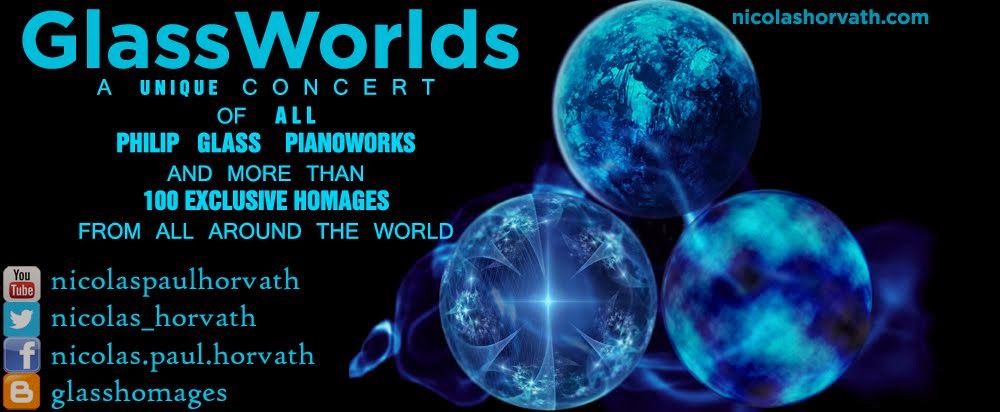Biography
Luxembourger, born 4 December 1946. Descendant of the Even Family from Beaufort (Luxembourg) and Metz (France). Studied 1959-66 piano and composition at the "Wiesbadener Konservatorium" in Wiesbaden with Karl-Wilhelm Bruehl and Heinrich Steuernagel. Studied law, music and history from 1966-73 at the Universities of Frankfurt, Wuerzburg and Mainz; history of music with Prof. Lothar Hoffmann-Erbrecht, esthetic of music with Prof. Theodor W. Adorno, and sacred music with Prof. Diethard Hellmann. Apart from this, as a composer, he is an autodidact. First Juridical State Diploma in 1973, Great Juridical State diploma (qualification for judgeship) in 1976.
Pierre Even began composing in 1964. His early works for string orchestra, for various ensembles and organ are influenced by the music of Paul Hindemith, the Second Viennese School and Hans -Werner Henze. They were performed in Wiesbaden between 1966 and 1974. During thirty years , Pierre Even then intensified its research and publications include numerous articles and books on the history of Nassau and Luxembourg. After a few creations of chamber and sacred music during this period, he started again with composing in 2003. Since then, public performances of his works for orchestra, chamber ensembles, vocals, piano and organ have taken place in Luxembourg, Germany, Belgium, France, the U.S.A. and China. His recent works include Three tangos for piano, 12 Miniatures for piano, Allegro in C for piano (fragment of W.A. Mozart, completed) , Nine characters for violin (or cello) and piano, Sonata for cello and piano, Trio for violin, cello and piano, Trio for flute, clarinet and bassoon, “Consolatio” for 2 violins, “Cantus alaudae” for recorder and accordion, Fanfare “Sino-Lux” for brass trio, “Heimatlos” - Six lieder after poems by Anise Koltz (also with orchestra), Three lieder after poems by Heinrich Heine, “Selige Sehnsucht” – Lied after a poem by Goethe, “Agnus Dei para las Víctimas del 11 de marzo de 2004 en Madrid” for baritone and organ , Paraphrase on the "Wilhelmus" for organ, “Tango para los Oídos” and “Tango Bravo” for orchestra, “Epigramm I” for orchestra, “Tarjana-mudra” for chamber orchestra, and about 20 arrangements of music from the 19th century for orchestra, symphonic band and different woodwind quartets.
Pierre Even is a lawyer in Wiesbaden and married to Heide H. Even in 1976. He is member of the board of the "Luxembourg Society for Contemporary Music (LGNM)".
The scores of Pierre Even are published on www.pierre-even.de. Recordings of music by Pierre Even: Sonata for Cello and Piano op. 28, Neuf caracteres pour violoncelle et piano op. 29a (Nr. 8-9), Tango melancólico op. 33 Nr. 1 (Kristi Becker and Susanne Duch, piano, Stephan Breith, cello), published by fortepiano (Germany) Nr. 1204 (Genius loci, Koehler - Even - Kirchner, 2007), available on www.fortepiano.de
Pierre Even began composing in 1964. His early works for string orchestra, for various ensembles and organ are influenced by the music of Paul Hindemith, the Second Viennese School and Hans -Werner Henze. They were performed in Wiesbaden between 1966 and 1974. During thirty years , Pierre Even then intensified its research and publications include numerous articles and books on the history of Nassau and Luxembourg. After a few creations of chamber and sacred music during this period, he started again with composing in 2003. Since then, public performances of his works for orchestra, chamber ensembles, vocals, piano and organ have taken place in Luxembourg, Germany, Belgium, France, the U.S.A. and China. His recent works include Three tangos for piano, 12 Miniatures for piano, Allegro in C for piano (fragment of W.A. Mozart, completed) , Nine characters for violin (or cello) and piano, Sonata for cello and piano, Trio for violin, cello and piano, Trio for flute, clarinet and bassoon, “Consolatio” for 2 violins, “Cantus alaudae” for recorder and accordion, Fanfare “Sino-Lux” for brass trio, “Heimatlos” - Six lieder after poems by Anise Koltz (also with orchestra), Three lieder after poems by Heinrich Heine, “Selige Sehnsucht” – Lied after a poem by Goethe, “Agnus Dei para las Víctimas del 11 de marzo de 2004 en Madrid” for baritone and organ , Paraphrase on the "Wilhelmus" for organ, “Tango para los Oídos” and “Tango Bravo” for orchestra, “Epigramm I” for orchestra, “Tarjana-mudra” for chamber orchestra, and about 20 arrangements of music from the 19th century for orchestra, symphonic band and different woodwind quartets.
Pierre Even is a lawyer in Wiesbaden and married to Heide H. Even in 1976. He is member of the board of the "Luxembourg Society for Contemporary Music (LGNM)".
The scores of Pierre Even are published on www.pierre-even.de. Recordings of music by Pierre Even: Sonata for Cello and Piano op. 28, Neuf caracteres pour violoncelle et piano op. 29a (Nr. 8-9), Tango melancólico op. 33 Nr. 1 (Kristi Becker and Susanne Duch, piano, Stephan Breith, cello), published by fortepiano (Germany) Nr. 1204 (Genius loci, Koehler - Even - Kirchner, 2007), available on www.fortepiano.de
Wiesengrund
(by the composer himself)
The philosopher and musicologist Theodor W. Adorno was my professor of aesthetics of music in 1967 at the University of Frankfurt, and it was Thomas Mann, who used Adorno’s paternal name Wiesengrund in his novel "Doktor Faustus", to explain the small motif at the beginning of the second movement of Beethoven's sonata op. 111. Wiesengrund means meadowground. Using this little pattern, allowing it to develop itself on the middle voices of the accompaniment of Parsifal’s “Wie dünkt mich doch die Aue heut so schön!” (How beautiful the meadows seem today!), I wanted to remember some predecessors of minimal music in the 19th century, allowing them to develop themselves together. After nearly one minute of highest harmony, it ends abruptly by a dodecaphonic sequence, coming from the extreme ranges and ending in the five tones g-l-a-s-s (g-la-a-es-es), so I pay tribute at the same time to my former professor, to the history of minimal music and to Philip Glass.




Aucun commentaire:
Enregistrer un commentaire